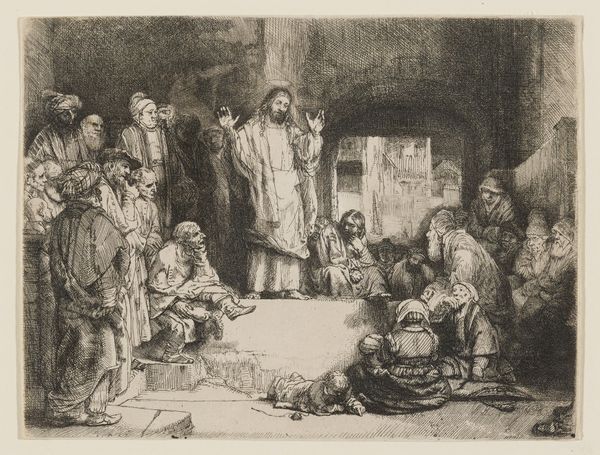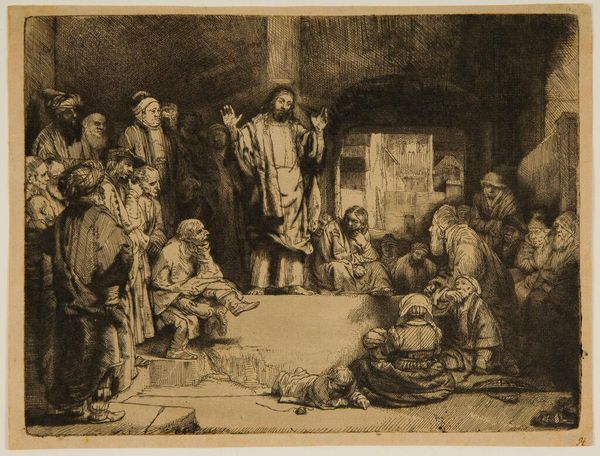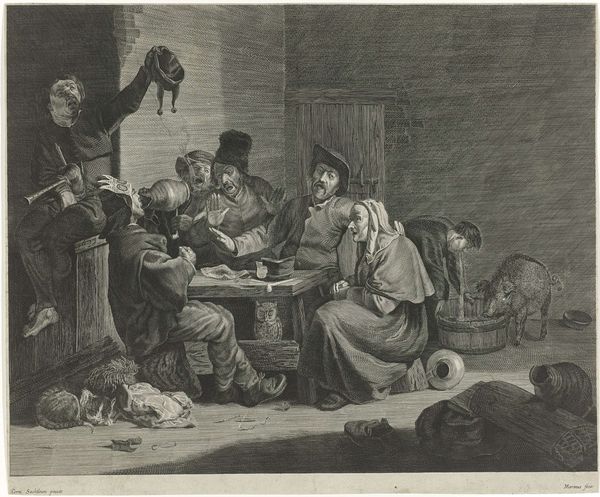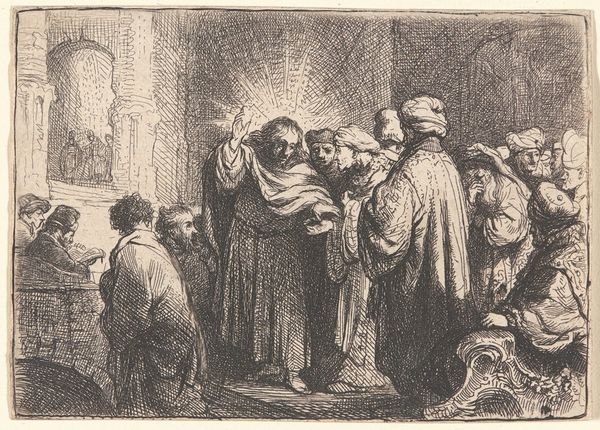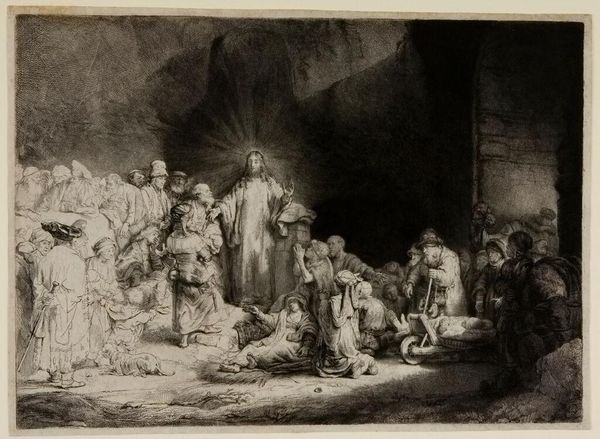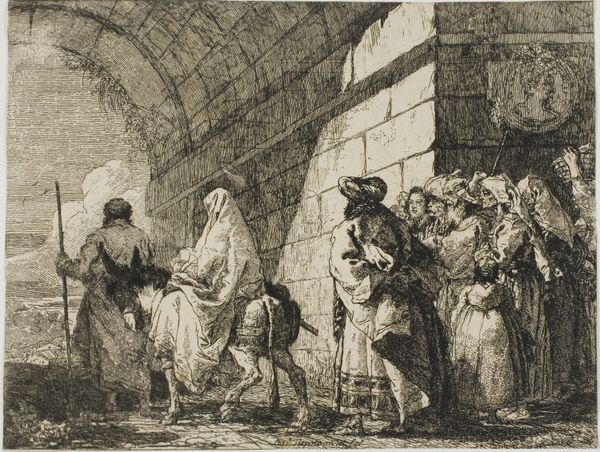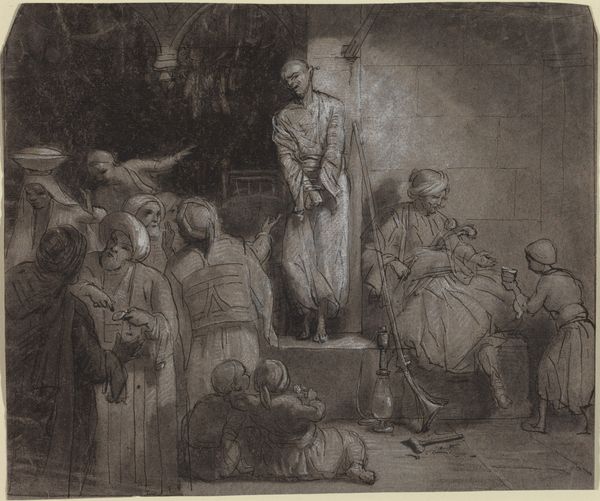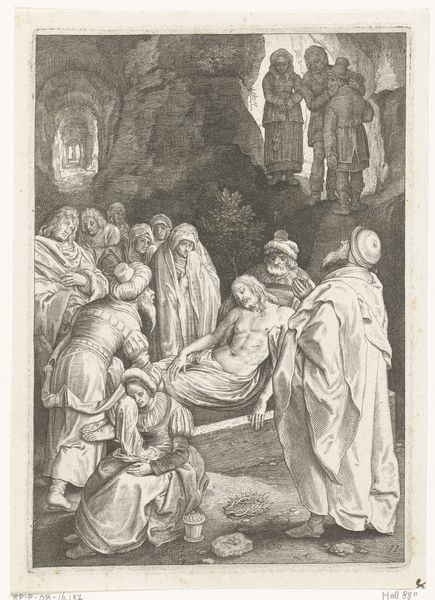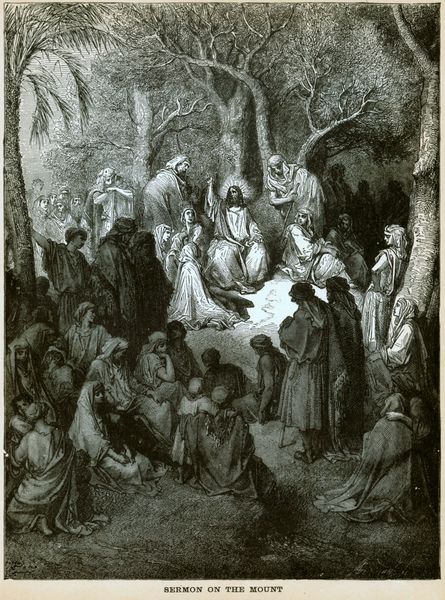
Dimensions: height 154 mm, width 205 mm
Copyright: Rijks Museum: Open Domain
Curator: Here we have "Christ Preaching," also known as "La Petite Tombe," an etching created by James Bretherton between 1760 and 1781, now housed in the Rijksmuseum. Editor: It’s a wonderfully evocative image, isn't it? The dark shadows lend the scene such a somber, almost claustrophobic feeling. The scale of the crowd makes the space feel so crowded. Curator: Indeed. Bretherton’s print demonstrates the enduring appeal of biblical scenes as a subject for art meant for public consumption. Prints like this one would have been relatively accessible, bringing religious narratives into homes and fostering individual contemplation. Editor: I am immediately struck by the varied reactions of the audience. It is impossible not to wonder if they feel powerless. The social commentary is evident, with Christ positioned amidst the suffering and the marginalized. There is a strong message of empathy embedded here, a call for justice that speaks to contemporary issues of inequality and oppression. Curator: The use of chiaroscuro, that strong contrast between light and dark, serves to highlight Christ, doesn't it? The technique would have been instantly recognizable as drawing heavily on the Baroque tradition of Rembrandt, making explicit Bretherton’s aspirations and allegiances as an artist operating in an international market of styles and taste. Editor: Absolutely. I believe it also deepens the psychological complexity of the piece. It draws attention to the power dynamics in play, allowing us to read Christ as a beacon of hope amidst despair, though, frankly, I question if that's a sentiment that would reach this crowd as individuals who have clearly experienced injustice. Curator: A critical element when we view works from this era is recognizing how accessible or exclusive cultural representation actually was and who determined such distribution. While printed images might suggest accessibility and democracy, the economics of acquisition would imply a class-based experience, particularly when so many communities were facing socioeconomic strife. Editor: Yes, thinking critically about accessibility and distribution remains absolutely vital, a poignant reflection as to whether equitable distribution is possible even today. Well, this has provided much food for thought regarding art, access, and agency! Curator: I agree, and such questions certainly give a powerful framework for continuing forward.
Comments
No comments
Be the first to comment and join the conversation on the ultimate creative platform.

